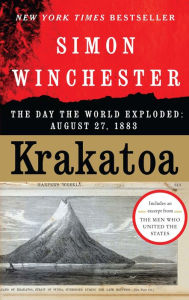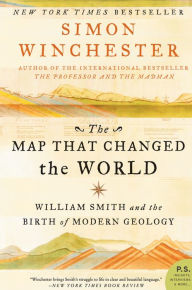Read an Excerpt
Krakatoa
The Day the World Exploded: August 27, 1883
Chapter One
"An Island with a Pointed Mountain"
Though we think first of Java as an eponym for coffee (or, to some today, a computer language), it is in fact the trading of aromatic tropical spices on which the fortunes of the great island's colonizers and Western discoverers were first founded. And initially supreme among those spices was the one rather ordinary variety that remains the most widely used today: pepper.
Piper nigrum, Syzygium aromaticum, and Myristica fragrans -- pepper, clove, and nutmeg -- were the original holy trinity of the Asian spice trade. Each was familiar to, and used by, the ancients. Two hundred years before the birth of Christ, for instance, the Chinese of the Han Dynasty demanded that their courtiers address their emperors only when their breath had been sweetened with a mouthful of Javanese cloves, the "odiferous pistils," as they were later more widely known. There is some vague evidence that Roman priests may have employed nutmeg as an incense; it was definitely in use as a flavoring in ninth-century Constantinople, since the terrifyingly Orthodox Saint Theodore the Studite -- the scourge of the image-smashing Iconoclasts -- famously allowed his monks to sprinkle it on the pease pudding they were obliged to eat on days when monastery meat was forbidden. And in Elizabethan times a nutmeg pomander was an essential for keeping foul ailments at bay: The notion that nutmeg could ward off the plague survived longer than many another old wives' tale.
Pepper, though, was of infinitely more moment to the ancients than to be merely a topping, nostrum, or cachou. The Romans used it in abundance: Gibbon wrote of pepper being "a favourite ingredient of the most expensive Roman cookery," and added his authority to the widely held idea that Alaric, the rambunctious king of the Visigoths, had demanded more than a ton of it from the Romans as ransom when he laid siege to the city in a.d. 410. The aureus and the denarius, the gold and silver coins of the empire, became the preferred currency of the Spice Route, and the Indian pepper merchants of Cochin and Malacca and the ports of southern Ceylon were said to be impressed that the denomination of coins was indicated by the number engraved upon them, not by their size.
However they may have been denominated, the coins must have been paid out in enormous numbers. Pepper was so precious and costly and so much in demand that the cost of it all had Pliny the Elder fulminating. "There was no year in which India" -- and by this he meant the Indies, since pepper traded came both from the Malabar Coast and from western Java -- "does not drain the Roman empire of fifty million sesterces." So dearly, he added drily, "do we pay for our luxury and our women."
(There is a pleasing symmetry about Pliny's involvement in this part of the story of Krakatoa, even if he appears in only a walk-on role. Although this rich and well-connected former soldier -- he was a cavalry officer in Roman Germany -- happily took on a variety of official duties on behalf of his emperors, Pliny was above all else a naturalist. He was a savant, or a student, as he once famously put it, of "the nature of things, that is, life." His reputation is based largely on his thirty-seven-volume Natural History, an immense masterpiece in which, among countless other delights, is the first use of the word from which we derive today's encyclopedia.
It was during the late summer of a.d. 79, while pursuing his official task of investigating piracy in the Bay of Naples, that Pliny was persuaded to explore a peculiar cloud formation that appeared to be coming from the summit of the local mountain, Vesuvius. He was duly rowed ashore, visited a local village to calm the panicked inhabitants -- and was promptly caught up in a massive eruption. He died of asphyxiation by volcanic gases on August 24, leaving behind him a vast reputation and, as memorial, a single word in the lexicon of modern vulcanology, Plinian. A Plinian eruption is now defined as an almighty, explosive eruption that all but destroys the entire volcano from which it emanates. And the most devastating Plinian event of the modern era occurred 1,804 years, almost to the day, after Pliny the Elder's death: at Krakatoa.)
Pepper has a confused reputation. There is no truth, for example, in the widely held belief that it was once used to hide the taste of putrefying meat; this charming thought perhaps derives from the equally delightful notion, still recognized by pharmacists today, that pepper can be used as a carminative, a potion that expels flatulence. But it was very much used as a preservative, and more commonly still as a seasoning. By the tenth century it was being imported into England; the Guild of Pepperers, one of the most ancient of London's city guilds, was established at least before 1180, which was when the body was first recorded (they were in court for some minor infraction); by 1328 the guild had been formally registered as an importer of spices in large, or gross, amounts: its members were called grossarii, from which comes the modern word grocer. Joseph Conrad caught the obsession, in Lord Jim:
The seventeenth-century traders went there for pepper, because the passion for pepper seemed to burn like a flame of love in the breast of Dutch and English adventurers about the time of James the First. Where wouldn't they go for pepper! For a bag of pepper they would cut each other's throats without hesitation, and would forswear their souls, of which they were so careful otherwise: the bizarre obstinacy of that desire made them defy death in a thousand shapes; the unknown seas, the loathsome and strange diseases; wounds, captivity, hunger, pestilence, and despair. It made them great! By heavens! it made them heroic . . .
Krakatoa
The Day the World Exploded: August 27, 1883. Copyright © by Simon Winchester. Reprinted by permission of HarperCollins Publishers, Inc. All rights reserved. Available now wherever books are sold.
















